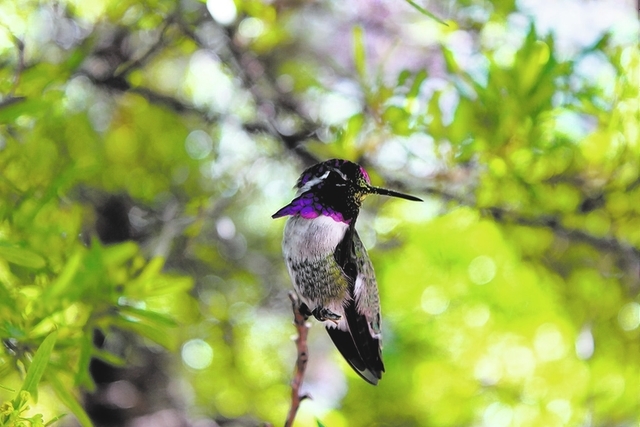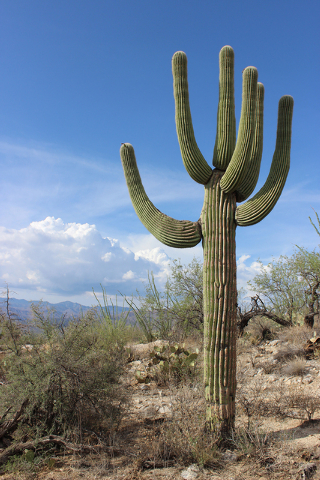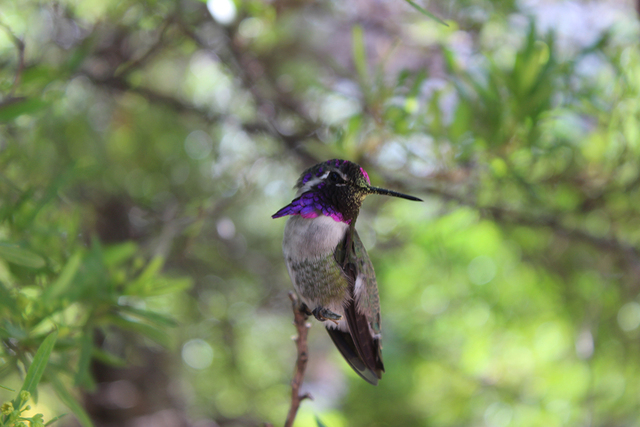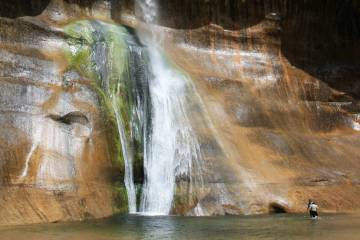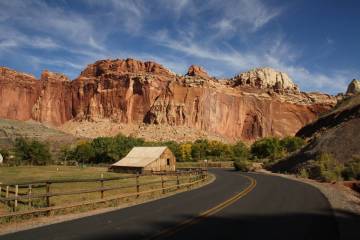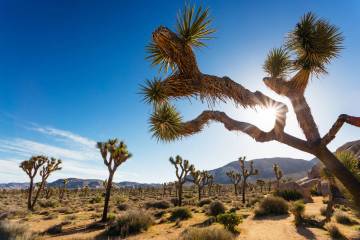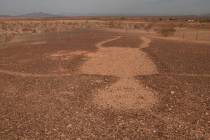Tucson area offers beautiful weather, flora and fauna
Longtime Southern Nevadans who love the Mojave Desert nevertheless often develop a desire to explore other arid landscapes. Typically, they dream of the Sonoran Desert, whose scenery may have inspired them to live in the Southwest. An excellent place to fulfill that desire is in and around Tucson, Ariz. There are dozens of places to take in the flora and fauna, but two places stand out: Saguaro National Park and the Arizona-Sonora Desert Museum, which has one of the world’s best zoos.
Just as our Mojave Desert has its signature plant in the Joshua tree, the Sonoran Desert has its saguaro cactus (Carnegiea gigantea), a plant so distinctive, it long ago became a symbol for the entire West. The saguaro is the largest cactus in the United States, with fully mature plants reaching heights of 40 feet or more. These slow growers may reach only 2 feet tall in 30 years, and it may take 50 to 100 years for a plant to grow its first arm.
One of the best places to see these magnificent plants up close is at Saguaro National Park, just outside of Tucson. This park is unique as it has two districts: The Tucson Mountain District is west of Tucson and faster to get to from Las Vegas; the Rincon Mountain District lies farther east.
Whichever district you visit, you will be immersed in a Sonoran Desert environment dominated by the mighty saguaro. In fact, there are more than 1.5 million of these stately cactuses in the park. Between the two districts, there are more than 165 miles of hiking trails ranging from short day hikes to multi-day excursions. You can walk into the park 24 hours a day, but it is open to vehicles only from sunrise to sunset in the Tucson Mountain District and 7 a.m. to sunset in the Rincon Mountain District. Visit nps.gov/sagu or call 520-733-5153.
To further your enjoyment of the desert, be sure to visit the 98-acre Arizona-Sonora Desert Museum. The museum lies 14 miles west of Tucson, 2 miles from Saguaro National Park West Visitors Center. Some 85 percent of the museum’s exhibits are outdoors, and they simulate natural environments of the Sonoran Desert. There are 2 miles of walking trails, both paved and gravel, and 56,000 individual plants of 1,200 native plant species.
The facility’s worldwide celebrity as a zoo is based upon 230 native mammals, reptiles, amphibians, insects and birds. Some of the more interesting habitats you will walk through include the Mountain Woodland Area and the Desert Grassland exhibits. The Mountain Woodland area features a mountain lion, black bear, Mexican gray wolves and Merriam’s turkeys.
A good path to take is the half-mile Desert Loop Trail. In one area of the trail, you might see a collared peccary (javelina), which looks like a miniature wild boar. Javelinas tend to congregate under the bridges along the west side of the loop.
Another must-see highlight of the museum is the hummingbird aviary, where you could spot eight species of hummingbirds. Through April 5, there is a raptor free-flight show twice daily. The presentations are not on a stage but in the open desert, adding to the thrill of the experience. Several kinds of raptors are featured, such as barn owls, peregrine falcons and gray and Harris’s hawks.
The museum is open daily, year-round. Seasonal hours are 8:30 a.m. to 5 p.m. Visit desertmuseum.org or call 520-883-2702.
Directions
From Las Vegas, take U.S. Highway 93 south for about 100 miles to Kingman, Ariz. Merge onto Interstate 40 east/U.S. 93 south and drive about 22 miles. Merge onto U.S. 93 toward Phoenix. Drive about 105 miles, and take the exit for U.S. Highway 60 east. Drive 38 miles and merge onto Arizona state Route 101 south/Loop 101 south/Agua Fria Freeway south. Travel about 9 miles, then merge onto Interstate 10 east. Drive about 124 miles to Tucson.
Deborah Wall is the author of “Great Hikes, A Cerca Country Guide” and “Base Camp Las Vegas: Hiking the Southwestern States,” published by Stephens Press. She can be reached at deborabus@aol.com.



